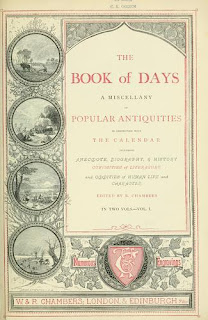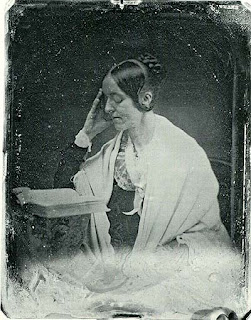 I have to thank Carolyn for telling us about Chambers Book of Days. Whenever I’m at a loss as to what to blog about, I check the Book of Days.
I have to thank Carolyn for telling us about Chambers Book of Days. Whenever I’m at a loss as to what to blog about, I check the Book of Days.
Today’s entry had an obscure Regency connection, but I couldn’t resist.
In 1850 on this day Margaret Fuller died.
Margaret Fuller, who was born in 1810 (my Regency connection), was an American journalist, critic and author, best known for her book, Woman in the Nineteenth Century, the first major American feminist work. She achieved many firsts: The first woman allowed to use the library at Harvard; first woman editor of the transcendental journal, The Dial; first full-time literary critic of the New York Tribune; its first female editor; its first female foreign correspondent.
 The story of her life as written in the Book of Days just charmed me. If we wrote a heroine like Margaret Fuller no one would believe her.
The story of her life as written in the Book of Days just charmed me. If we wrote a heroine like Margaret Fuller no one would believe her.
Chambers introduces Margaret this way:
“Every student of American society has noted the wide diffusion of intellectual ability, along with an absence of genius, or the concentration of eminent mental gifts in individuals. There is an abundance of cleverness displayed in politics, letters, and arts—there is no want of daring and ambition—but there is a strange lack of originality and greatness. The same is true of the feminine side of the people. A larger number of educated women, able to write well and talk well, it would be difficult to find in any European country, but among them all it would be vain to look for a Madame de Staël, or a Miss Martineau. Perhaps those are right who cite Margaret Fuller as the fairest representative of the excellences, defects, and aspirations of the women of New England.”
I guess Chambers didn’t think a lot of Americans…Or of women.
Here is Chambers’ description of Margaret:
…rather under the middle height, with fair complexion and fair strong hair, of extreme plainness, with a trick of perpetually opening and shutting her eyelids, and a nasal tone of voice. She made a disagreeable impression on most persons, including those who subsequently became her best friends; and to such an extreme, that they did not wish to be in the same room with her. This was partly the effect of her manners, which expressed an overweening sense of power, and slight esteem of others, and partly the prejudice of her fame, for she had many jealous rivals….When the first repulse was over, she revealed new excellences every day to those who happily made her their friend.
Can you imagine writing a character description like that?
There is no doubt that Margaret Fuller was an exceptional woman of any era, but she also had a romance that was at least unusual. When in Italy, she met an Italian count, Count Ossoli, who Chambers says was
“a poor Roman noble, attached to the papal household. Concerning him she wrote to her mother: ‘He is not in any respect such a person as people in general expect to find with me. He had no instructor except an old priest, who entirely neglected his education; and of all that is contained in books he is absolutely ignorant, and he has no enthusiasm. On the other hand, he has excellent practical sense; has been a judicious observer of all that has passed before his eyes; has a nice sense of duty, a very sweet temper, and great native refinement. His love for me has been unswerving and most tender.'”
Although Chambers says she married Count Ossoli, Wikipedia says there is no evidence that they married. Margaret apparently notified her mother of the union when she’d had a child by Ossoli.
Ossoli went on to fight in the revolution for Italian unity and Margaret nursed the wounded, but the rebellion failed and Margaret decided to return to America even though a fortune teller told Ossoli to “beware the sea” and Margaret had a premonition that 1850 would be a year when something dreadful would happen to her.
Chambers writes:
In spite of gloomy forebodings, they set sail from Leghorn in a merchant-ship. At the outset of the voyage, the captain sickened and died of confluent small-pox in its most malignant form. Ossoli was next seized, and then their infant boy, but both recovered, though their lives were despaired of. At last the coast of America was reached, when, on the very morning of the day they would have landed, 16th July 1849, the ship struck on Fire Island beach. For twelve hours, during which the vessel went to pieces, they faced death. At last crew and passengers were engulfed in the waves, only one or two reaching the land alive. The bodies of Ossoli and his wife were never found, but their child was washed ashore, and carried to Margaret’s sorrowing mother.
A sad end to a remarkable woman who led an unbelievable life.
Have you come across any real characters whose lives are more unbelievable than fiction? Do you have any favorite women heroines from history?








